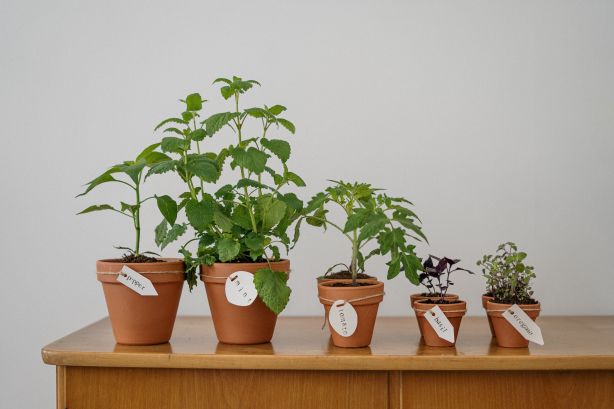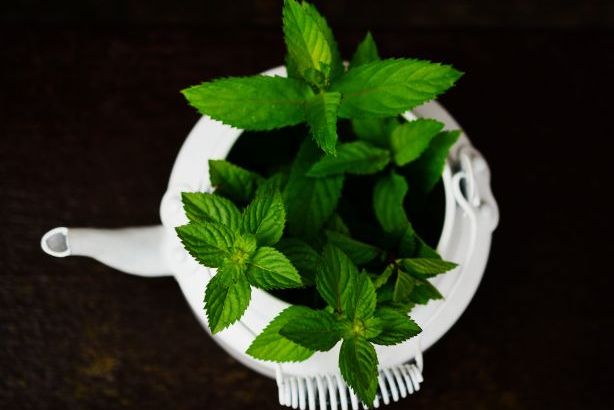Herbs are aromatic plants, widely used in cooking, cosmetics and medicine. The strong aroma of herbs, most noticeable in warm days, is due to the essential oils found in their leaves and flowers. Herbs have a high decorative value and do not need much space or special care to look fresh and grow.
You do not need to own a large garden to create your fragrant corner. In addition to your favorite flowers, you can grow fresh herbs, spices, and even vegetables in pots. Even the smallest balcony or terrace can accommodate several pots of aromatic spices and herbs. The condition is to choose a sunny and sheltered place and to water the plants regularly, but only if the soil is dry. Excessive watering can lead to root rotting. This way you get the opportunity to always cook with freshly picked spices, and as a bonus you also get an incredible aroma, for more throughout the kitchen. Fresh herbs and spices are the secret ingretient to every delicious dish. The most suitable spices for growing in pots are: mint, thyme, parsley, basil, oregano, rosemary.
How to plant herbs?
March is the best month to create your own herb garden. You can start with seeds. Here the most important thing is to cover them with soil and press the soil well after the sowing. Until the seeds germinate, they should be watered every day. Here are some tips to always have fresh herbs on hand:
Basil (Ocimum basilicum) – Basil loves heat, plenty of sun and regular watering. It grows quickly. Just sprinkle the seeds in the pot, lightly cover them with soil and keep the pot in a warm and bright place until they germinate. You can extend its use by periodically cutting 1/2 or 2/3 of its height and not allowing it to blossom. Then the basil makes new branches and continues to produce new fresh leaves. The soil in the pot should be regularly fertilized during the growing season, allowing you to have fresh basil as long as possible.
Oregano (Origanum vulgare) – Oregano grows best in a large pot (5-10 liters). It does not freeze, tolerates partial drought and prefers full sun. When the plant begins to blossom, the flowers with the stems are cut and dried. But the fragrant leaf mass can be used without blooming.
Lemon thyme (Thymus citriodorus) – This is a small evergreen shrub with small, oval and highly fragrant leaves. Thyme is a culinary, medicinal and decorative plant that reaches a height and width of 20 cm. It is generally unpretentious to grow, but in very cold and snowless winters it can be damaged by the cold, so it is good to do some protection. Thyme blossoms in June and July with small pink-purple flowers and grows best in a sunny and warm place with well-drained soil. It is undemanding to watering and soil fertility. This variety has a strong lemon aroma and is very good for making herbal tea.
What pot to choose?
Herbs can be grown in both plastic and ceramic pots. The condition is that the vessels should provide enough volume for the development of the root system and so that a more magnificent above-ground part grows accordingly.
Herbs and spices also grow in water. Water-grown spices are just as delicious as those planted in the garden. No need to water or think about the change of seasons. Here’s what you’ll need to create a small kitchen garden:
It is best to use cuttings from plants. Delicate cuttings make roots quickly in water. If you have any spices growing in the garden, just pluck a fresh cutting about 15 cm long and put it in a bowl of water. The best thing about this type of cultivation is that you can also use store-bought spices. Just wash them under running water and cut off the bottom. Remove the lower leaves from the cutting, cut near the nodes from which the roots will grow. When you put the cuttings in the pot, there should be no leaves that touch the water. They can easily rot, as is the case with flower vases.
For a small kitchen garden of spices you can put cuttings in glass bottles with fresh water. Usually the roots like to grow away from sunlight and therefore colored bottles, especially amber color are very suitable. You can also just wrap paper around the jar so that the roots are in the dark. This would also suppress the development of mold on the walls of the vessel and on the surface of the roots. Containers with a narrower opening have the advantage that they can keep the cutting in an upright position. In any case, the hole should be neither too wide nor too narrow around the cutting. The roots must breathe and the opening must allow air movement.
Above all, growing your own herbal garden is so much fun! From choosing the plants and pots, seeig them grow and using them to make great meals and tea!







